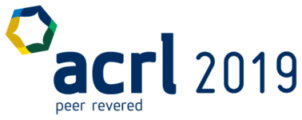| Are you curious about ways to provide new digital access models to your library for your community? Our virtual poster highlights and demonstrates some of our efforts in the area of 3D modelling in Minecraft and 3D Via. Learn more about our initiatives and our experience in working with students, faculty, and community. Using the Ontario Institute for Studies in Education (OISE) library at the University of Toronto as a case study, we are working on developing two approaches to model the real library into a three-dimensional virtual library. In an immersive game environment, the virtual library environments allow participants to use an avatar to walk virtually through the library and collections, and interact with other users. This virtualization project explores agile alternatives to improving the library via the results and feedback gathered from this model. In phase one, we are examining topics including potential location of different library services, the present physical arrangements vs. potential future arrangements, the location of resources, accessibility and usability, and considering new formats for basic library instruction (especially via Minecraft). As we move forward, we hope to further develop the virtual environments to allow for faculty/student and librarian interaction, and to create a social platform for interaction, and provision and promotion of library services. We invite you to share your thoughts and collaborate with us. |

